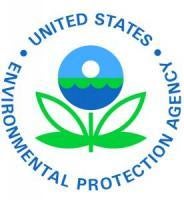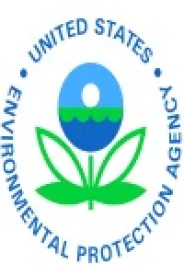WASHINGTON - The U.S. Environmental Protection Agency (EPA) is adding 12 new hazardous waste sites that pose public health and environmental risks to the National Priorities List (NPL) for cleanup under the Superfund program. EPA is also proposing to add another eight sites to the list.
Superfund is the federal program that investigates and cleans up the most complex, uncontrolled or abandoned hazardous waste sites in the country. For each of the 20 sites announced September 13, 2012 EPA has received letters of concurrence from state officials supporting the NPL listing.
“Cleaning up contamination is vitally important to the health of America’s communities," said Mathy Stanislaus, assistant administrator for EPA’s Office of Solid Waste and Emergency Response. “Putting clean land back into productive use leads to increases in property values, generates new jobs and creates a stronger local economy that will strengthen these communities for years to come.”
Since 1983, 1,676 sites have been listed on the NPL. Of these sites, 360 sites have been cleaned up resulting in 1,316 sites currently on the NPL (including the 12 sites added today). There are 54 proposed sites (including the eight announced September 13 awaiting final agency action.
Contaminants found at the sites include acetone, arsenic, benzene, cadmium, chromium, copper, dichloroethene (DCE), hexavalent chromium, lead, mercury, methyl ethyl ketone (MEK), polynuclear aromatic hydrocarbons (PAHs), polychlorinated biphenyls (PCBs), tetrachloroethylene (PCE), pentachlorophenol (PCP), trichloroethane (TCA), trichloroethylene (TCE), xylene and zinc.
With all NPL sites, EPA works to identify companies or people responsible for the contamination at a site, and requires them to conduct or pay for the cleanup. For the newly listed sites without viable potentially responsible parties, EPA will investigate the full extent of the contamination before starting significant cleanup at the site. Therefore, it may be several years before significant EPA clean up funding is required for these sites.
The following 12 sites have been added to the National Priorities List:
• Alabama Plating Company, Inc. (former electroplater) in Vincent, Ala.
• Cedar Chemical Corporation (former chemical manufacturer) in West Helena, Ark.
• Fairfax St. Wood Treaters (former wood treating operation) in Jacksonville, Fla.
• Bautsch-Gray Mine (former lead and zinc mine) in Galena, Ill.
• EVR-Wood Treating/Evangeline Refining Company (former wood treating operation) in Jennings, La.
• Leeds Metal (abandoned scrap metal facility) in Leeds, Maine
• Holcomb Creosote Co (former wood treating operation) in Yadkinville, N.C.
• Orange Valley Regional Ground Water Contamination (contaminated ground water plume) in Orange/West Orange, N.J.
• Peters Cartridge Factory (former ammunition manufacturer) in Kings Mills, Ohio
• West Troy Contaminated Aquifer (contaminated ground water plume) in Troy, Ohio
• Circle Court Ground Water Plume (contaminated ground water plume) in Willow Park, Texas
• U.S. Oil Recovery (former used oil recovery operation) in Pasadena, Texas
The following eight sites have been proposed for addition to the National Priorities List:
• Pike and Mulberry Streets PCE Plume (contaminated ground water plume) in Martinsville, Ind.
• Former United Zinc & Associated Smelters (former zinc smelter) in Iola, Kan.
• Creese & Cook Tannery (former tannery and finishing facility) in Danvers, Mass.
• Walton & Lonsbury Inc. (former chrome plating operation) in Attelboro, Mass.
• Matlack, Inc. (former chemical transportation business) in Woolwich Township, N.J.
• Riverside Industrial Park (former paint manufacturer) in Newark, N.J.
• Clinch River Corporation (former pulp and paper mill) in Harriman, Tenn.
• 700 South 1600 East PCE Plume (ground water plume) in Salt Lake City, Utah
EPA is also withdrawing its earlier proposal to add the Evergreen Manor Ground Water Contamination site in Winnebago County, Illinois to the NPL because remedial action has been completed. Affected residences have been connected to the public water supply, a county ordinance is in place which restricts the installation of private wells in the affected area, and contaminants of concern have remained below cleanup standards since 2006.
Federal Register notices and supporting documents for the final and proposed sites: http://www.epa.gov/superfund/sites/npl/current.htm
Information about how a site is listed on the NPL: http://www.epa.gov/superfund/sites/npl/npl_hrs.htm
Superfund sites in local communities: http://www.epa.gov/superfund/sites/index.htm
Release Date: 09/13/2012
Contact Information: Enesta Jones (News Media Only), jones.enesta@epa.gov, 202-564-7873, 202-564-4355 Stacy Kika (News Media Only), kika.stacy@epa.gov, 202-564-0906, 202-564-4355




 />i
/>i

